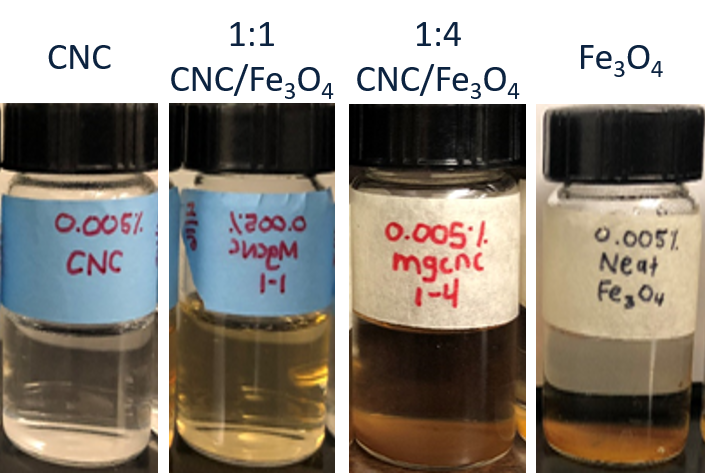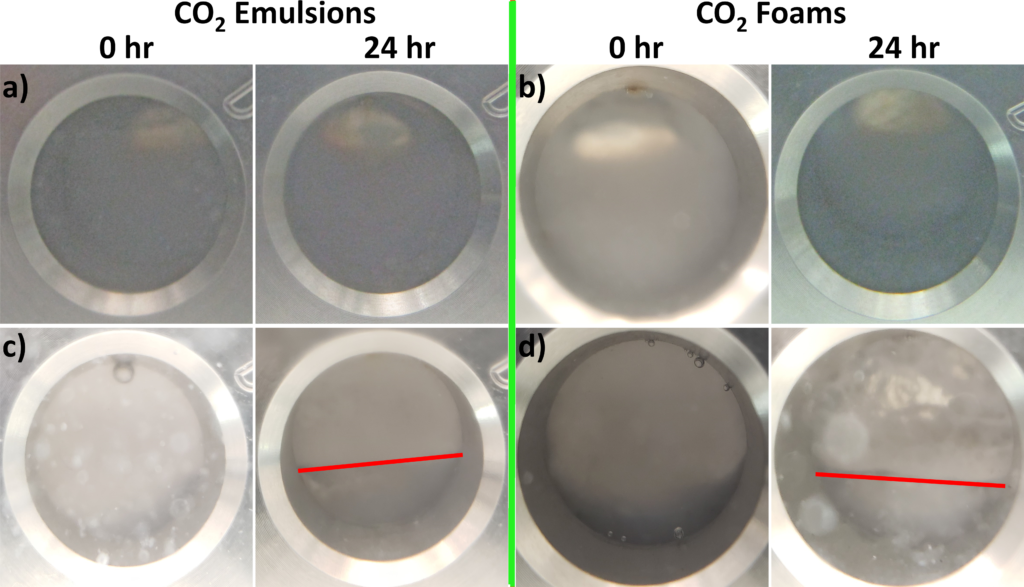Colloids and Sustainable Nanomaterials Lab
Dr. Ureña-Benavides research includes fundamental and applied aspects of sustainable nanotechnology. The research group investigates colloidal properties of bio-based and inorganic nanoparticles and their applications in areas including piezoelectric nanocomposites, low energy separations, underground sequestration of CO2 and responsible use of oil & gas.
Colloidal Properties of Nanoparticles
The effective use of nanoparticles requires adequate control of their colloidal properties. Individually dispersed nanoparticles, or nanoparticle clusters, can both be beneficial. Our research seeks to control the dispersion and aggregation of bio-based nanoparticles via molecular scale manipulation of interfacial interactions. In the example below cellulose nanocrystals (CNC) were modified with magnetite (Fe3O4) nanoparticles, increasing the magnetite content promotes nanoparticle flocculation.

Nanoparticle Stabilized Foams and Emulsions
CNCs have been used to successfully stabilized oil/water emulsions and CO2/brine foams in high salinities including synthetic seawater (SSW), American Petroleum Institute (API) brine. The nanocrystals stabilize emulsions and foam by forming a thick rigid layer around the droplets or bubbles. These emulsions and foams are being investigated for underground sequestration of CO2, oil bioremediation, and low energy separations. In the example below CO2 at 20.7 MPa (3,000 psi) was dispersed in brine at room temperature and at 70 °C (158 °F) to mimic conditions found underground. CO2 is liquid at room temperature and supercritical at 70 °C at the pressure used.

Advanced Nanocomposites
Nanocellulose can be used as effective nanofillers for multifunctional polymeric materials by enhancing mechanical properties, hydrophobicity/hydrophilicity and thermal insulation. Current research with thermoset epoxy resins have resulted in increased storage and loss moduli upon addition of CNCs, leading to a simultaneous enhancement of stiffness and energy dissipation characteristics. These enhanced resins can potentially lead to light weight structural materials for the construction, automotive and aerospace industries.
Funding Sources
We thank the financial support that makes possible our research





